The Smoke – Branding in Canada
Host: HerStory Western Lifestyle Photography
Written by Kaylie Franklin
Just when we thought winter would never end and the snow would never stop, the sight of green grass and the sounds of momma cows bawling for their new baby began.
In my opinion this is one of the best times of year in Alberta, and probably most of western Canada. Finally, we can get outside and do stuff! First on the list is branding. Not all cattle producers brand at this time of year, but I would say around 75% do. The lack of insects and cooler temps help both humans and bovine. You must remember we have been in a deep freeze for the past five months, the tiniest hint of sun makes one sweat! Although we are basically halfway through Spring it is still common to get a snow storm or very wet weather which can affect calves but usually if it is sunny on branding day we are golden.
On the ranch this year we processed around 300 cattle, with quite a lot of losses from the cold winter months and the early April snow storm. Around our area there is a wide range of herd sizes from the neighbour down the road that will brand 1000+ head, to the rancher that should be retired but just can’t quit the cattle habit and have 20 head running around. I think with any size of operation spring jobs are a big deal.
The Western Lifestyle in Alberta has a bit of the old and new thrown in together. A large portion of the ranches today are handed down from generation to generation. Due to the cost of land and running expenses, the idea of running as a family or helping your neighbour seems to be the key to keeping afloat. There are many ways to get things done when it comes to branding. And you will find, depending on what the generation before did, it is usually what the next generation will follow.
On the ranch, you will find us running our calves through a sorting tub and then into the table (chute that tips on its side for easier branding and castrating, called a ‘cradle’ in Australia). The front-end crew love this as it usually requires less running and more control of the calf but the back-end staff usually have a few good war wounds to show for their efforts. The calves are tagged with a CCIA tag, if headed to community pasture they will get their corresponding number for their herd, 4ml of 8 way and 2ml of Pyramid 5 both injected under the skin, check bull calves for nuts, and any other doctoring like scours.
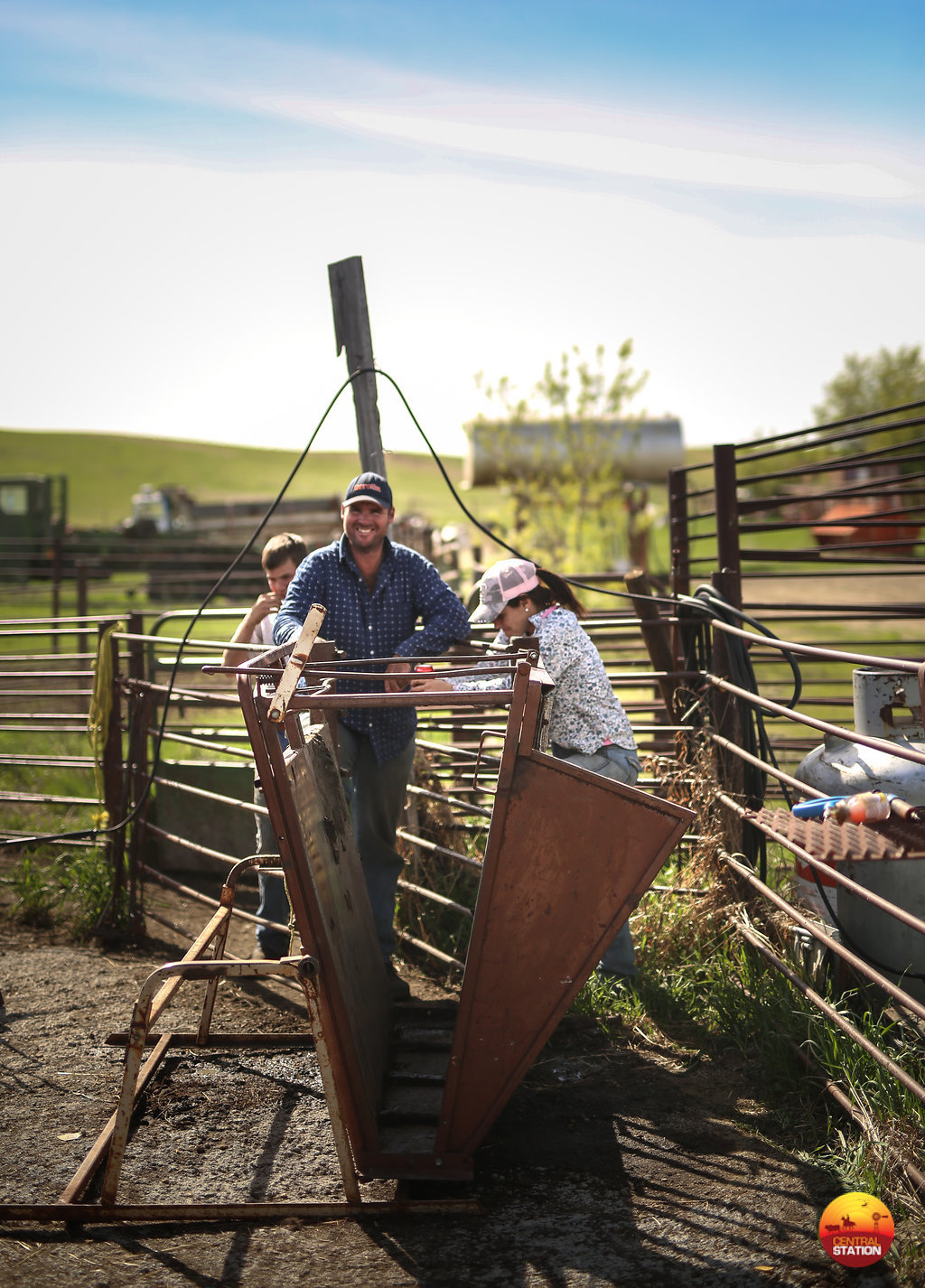 The Calf Cradle is a simple but time saving device
The Calf Cradle is a simple but time saving device
On average, we can process 150 head in about 3-4 hours. Depending on the number of escapees out the back pen, calves that just can’t understand why they need to be calm while entering and exiting the race way, and the odd beer break. This way of processing on average requires a lot less people depending on how much you want to take on yourself. We can usually brand with as little as 2-3 people, those are the days you want to make sure your busy doing something else. I am still nursing a big bruise from an early May branding session.
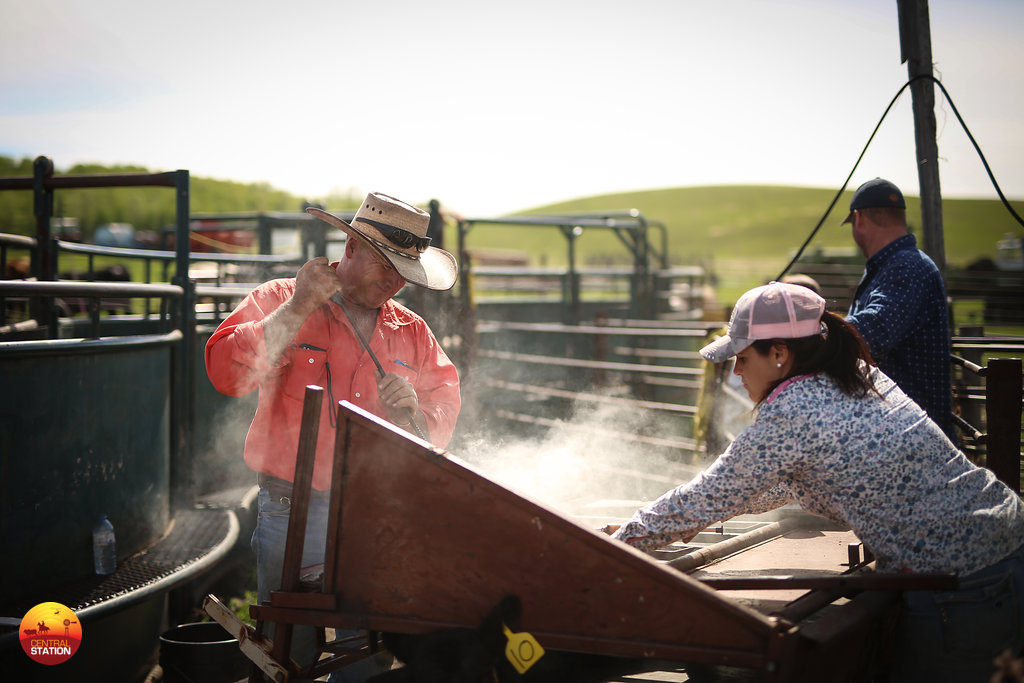 Cradling means less people to process large batches.
Cradling means less people to process large batches.
You will find a lot of other Ranches will rope and drag to the pot. This is something that the Great West is known for. You will often hear people ask, “are yah Dragging?”. This requires a lot more people and usually is the reason for people to switch from “Dragging” to “Tabling”.
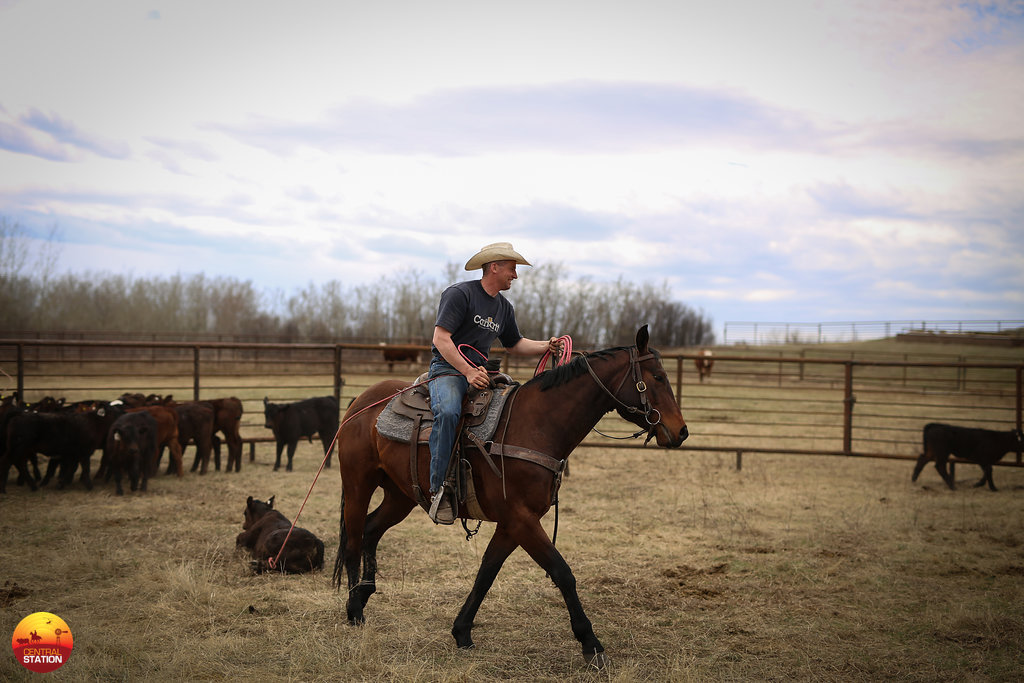 Big smiles when you catch a set of heels
Big smiles when you catch a set of heels
From as Photographers perspective I love when they “Drag”. You will find the doctoring does not change much from one method to the other but the excitement and overall atmosphere changes. Its not as fun to rib someone when they get kicked but when they miss a set of heels they are fair game. I’m always amazed at the skills that some of these old cowboys still have. They can hardly walk, but the moment they see that branding smoke all their aches and pains seem to go away, their leg swings effortlessly over the saddle and that rope seems to fall into place with a flick of the wrist.
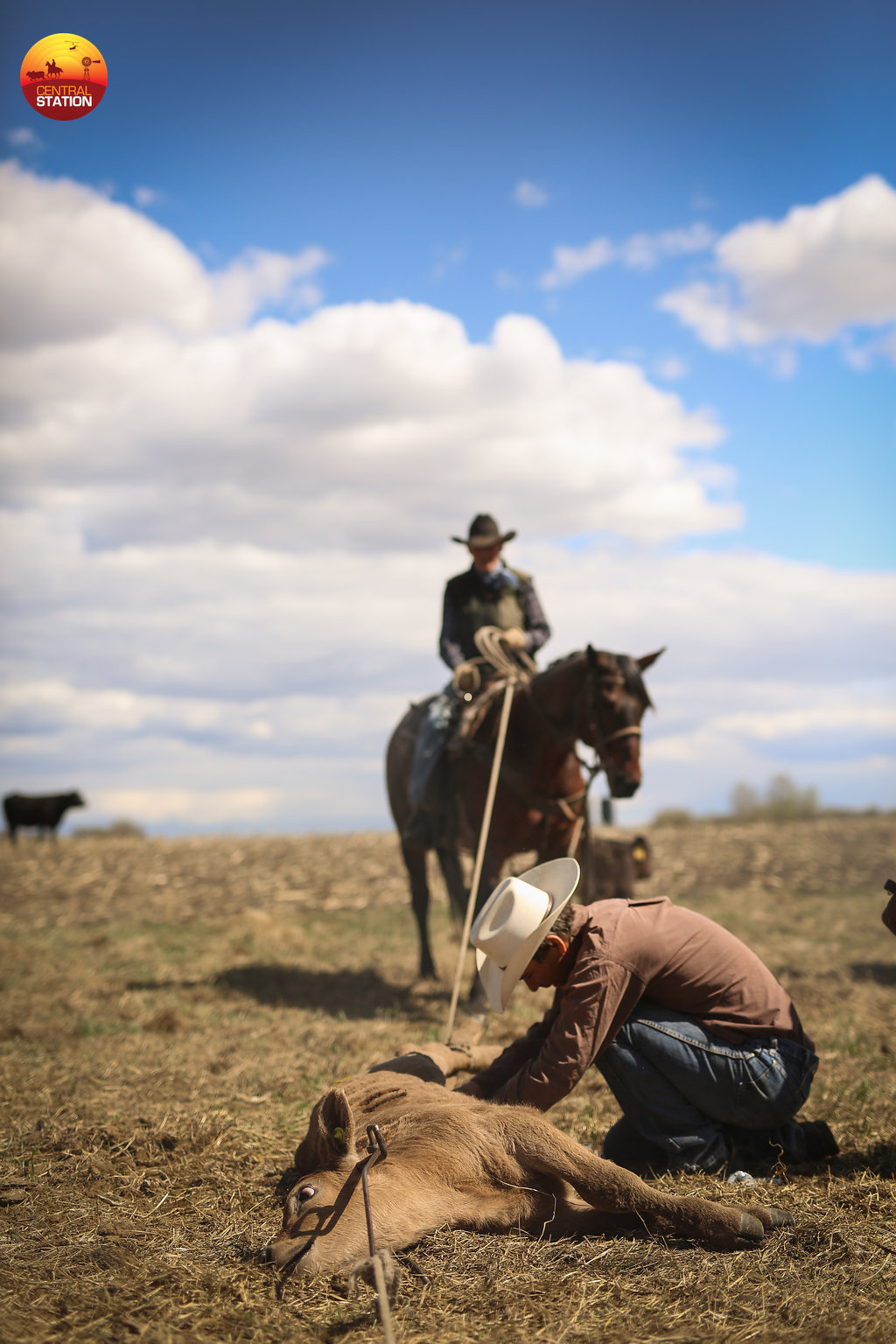 Quinn Franklin is on ground crew while his 75 year old father holds tension on the calves heels.
Quinn Franklin is on ground crew while his 75 year old father holds tension on the calves heels.
Most of the time you will have 3-5 guys/girls roping and then 5+ ground crew. Ropers usually aim to get two heels and a good dally as they drag to the branding pot. Ground crew jobs consist of running the branding iron, the horning iron, castrating (if not rung at birth) vaccinating and/or tagging.
I photographed a mom of four kids this year, that would roll, tag, and vaccinate a calf before the roper had stopped dragging! I would say those years of being a mom to four little ones paid off! I have seen a lot of people using nord forks this year to help the ground crew. This gives you an upper hand on some of those big spring calves. You find that even the younger kids can get involved with this tool as it takes the fight out. I have also started to see the use of Electric Irons as it helps when we have dry conditions and gives a nice even brand as the heat is instant and consistent throughout.
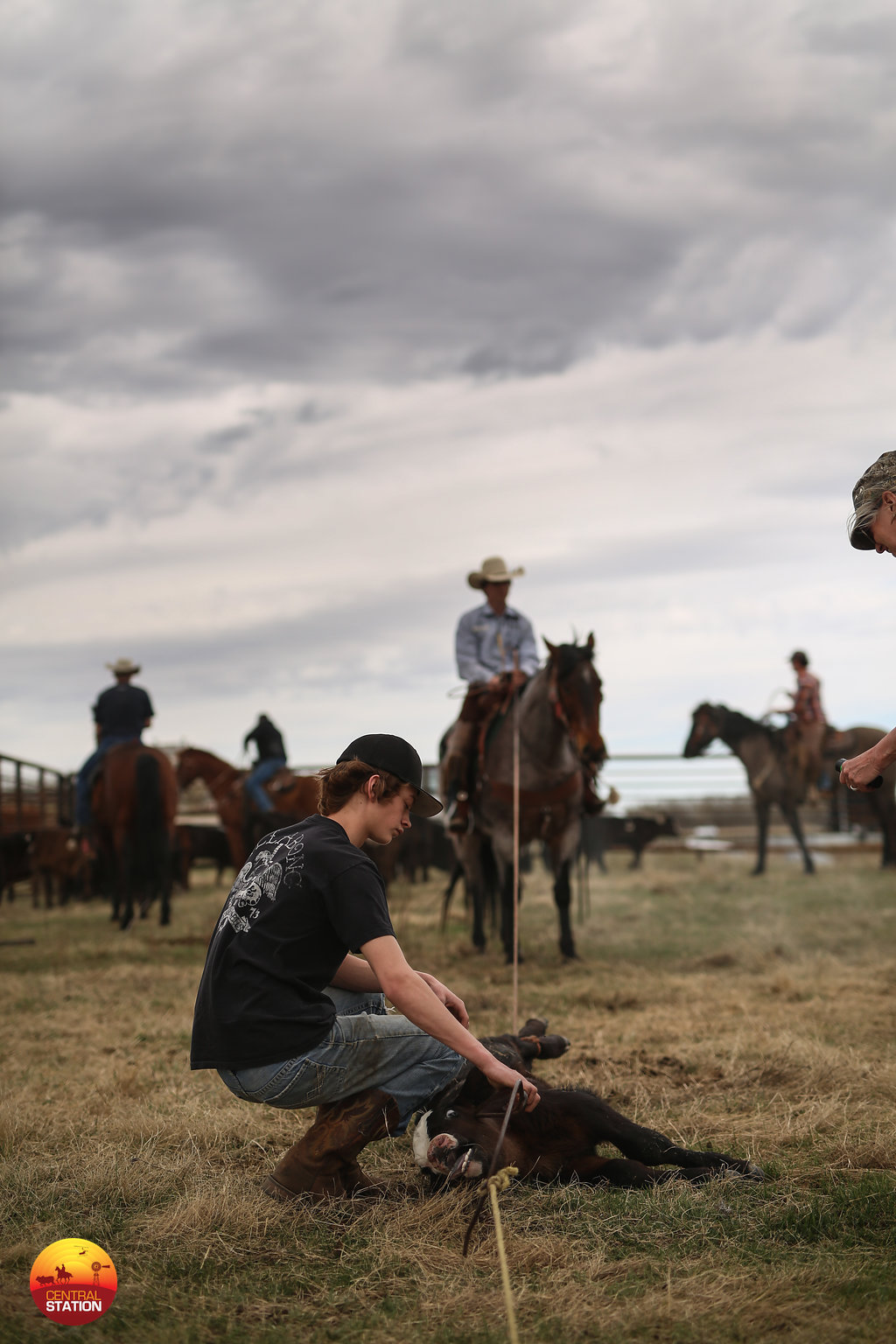 This young boy is able to help out with the use of the Nord Forks.
This young boy is able to help out with the use of the Nord Forks.
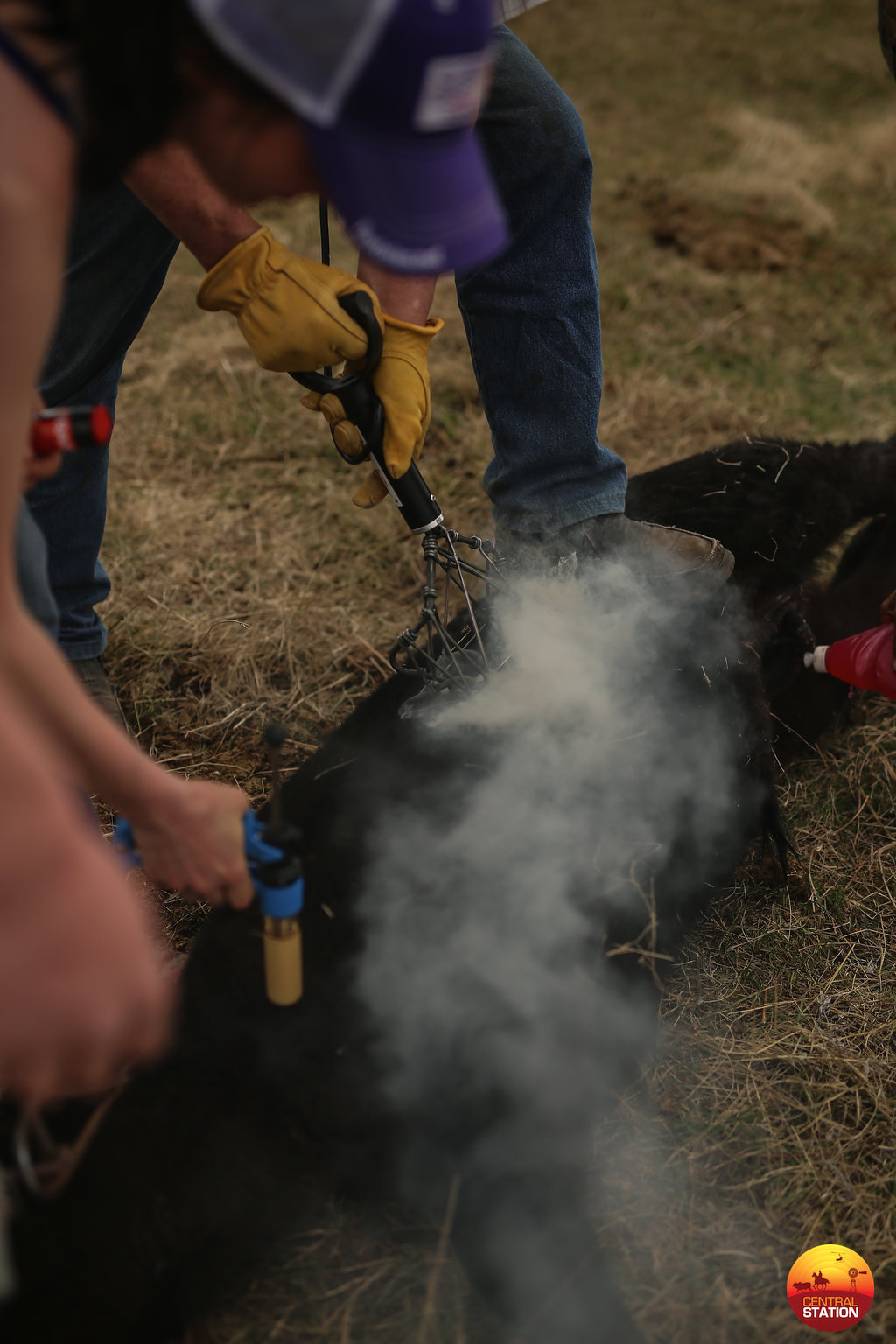 We are seeing the use of electric branding irons a lot.
We are seeing the use of electric branding irons a lot.
I guess change is good for somethings and what matters is that we are keeping the West alive regardless of how the brand gets on the calf.
This time of year, we always have my brother-in-law and sister-in-law home. Leanne and Andrew Grayson of Killarney, Queensland who spend half the year in Canada running a community pasture. The Ranch is Leanne’s father’s, Andrew and she have 50+ cows here. Every year on their return to Canada they are in charge of getting the branding underway while the others are trying to get seed in the ground. Also, Andrew and Ellie Hill, of Killarney, Queensland who happen to be visiting on their honeymoon joined us this year. With Leanne being a vet assistant and Ellie being a vet, I found myself in the back tub wondering how I lost my tagging position and how I was going to persuade the 200-lb calf up the race without provoking kicking. It’s so wonderful to be able to have friends and family on both sides of the big lake that can visit and be such a great help in our everyday operations.
Cattle Production around the world seems to have its differences and likenesses. At the end of the day we are all trying to do what we love and keep what we have learned from the generations before us alive. Whether you tip’em or drag’em, we are all doing it the way we think is best and because of that our cattle production around the world will continue.
